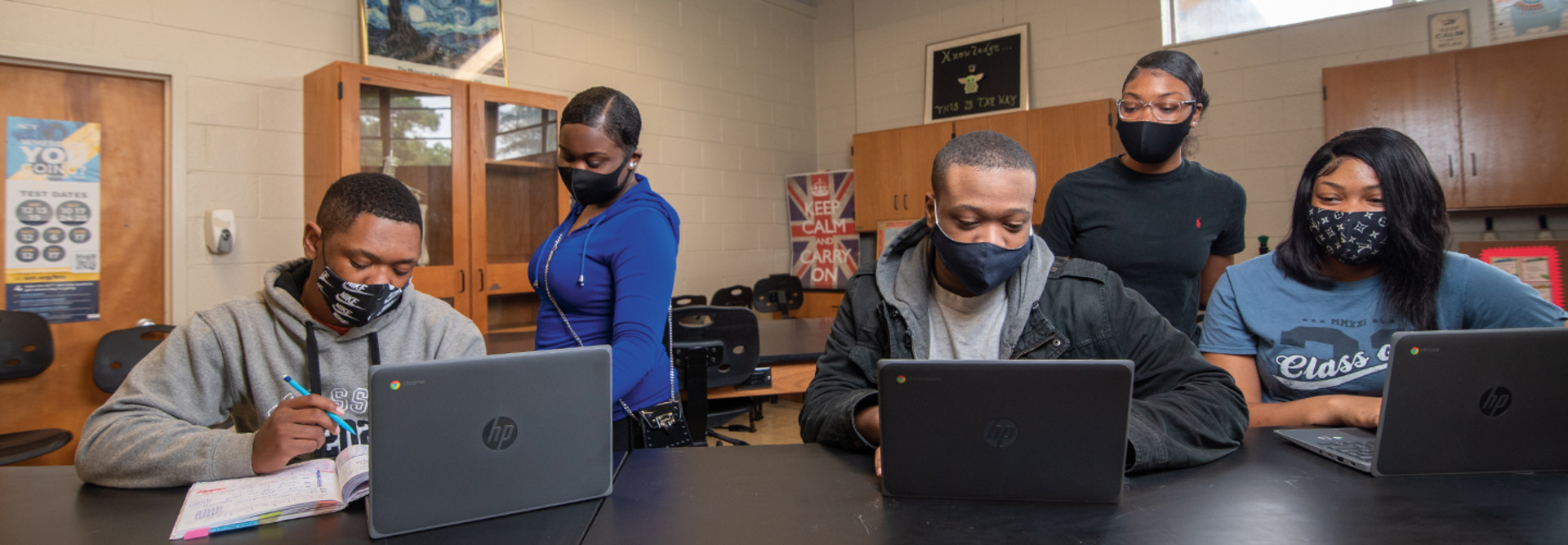Yet Aberdeen has struggled to implement IT upgrades that could support robust distance learning, innovative curricula, online testing and other initiatives that prepare students for success in college and the workforce.
Long-standing funding challenges remain a barrier. According to the Mississippi Department of Education, more than 90 percent of the state’s school districts accept Title I funding, federal aid intended to help students from low-income families meet state academic benchmarks. But this extra funding is not enough.
Last year, as schools pivoted to remote learning, the COVID-19 pandemic thrust the country’s ongoing digital divide into the spotlight. Districts serving students of color and low-income students in Southern states such as Mississippi have long been disproportionately affected with access challenges, according to “Looking Back, Looking Forward: What it will take to permanently close the K–12 digital divide,” an analysis published in January by Common Sense Media, Boston Consulting Group and the Southern Education Foundation.
Connectivity Challenges Title I School Students
Compared with other states, the report says, Mississippi is home to the highest proportion of K–12 students — 50 percent, or 234,000 students — who do not have an adequate internet connection.
Until recently, Bullard’s students were among an estimated 16 million public school students nationwide who were considered digitally disconnected because they lacked reliable high-speed internet or access to a working computing device at the start of the pandemic. That figure decreased to about 12 million, thanks to federal CARES Act funding and other state and local aid. These funds made significant technological upgrades possible for many districts that, like Aberdeen, had struggled with weak Wi-Fi, aging desktop computers and limited opportunities for remote learning before the pandemic.
In Aberdeen, many students had no personal computing devices other than cellphones at home until this school year, Bullard says. Using CARES Act funding, the district started a one-to-one Chromebook program for its 1,063 students.












